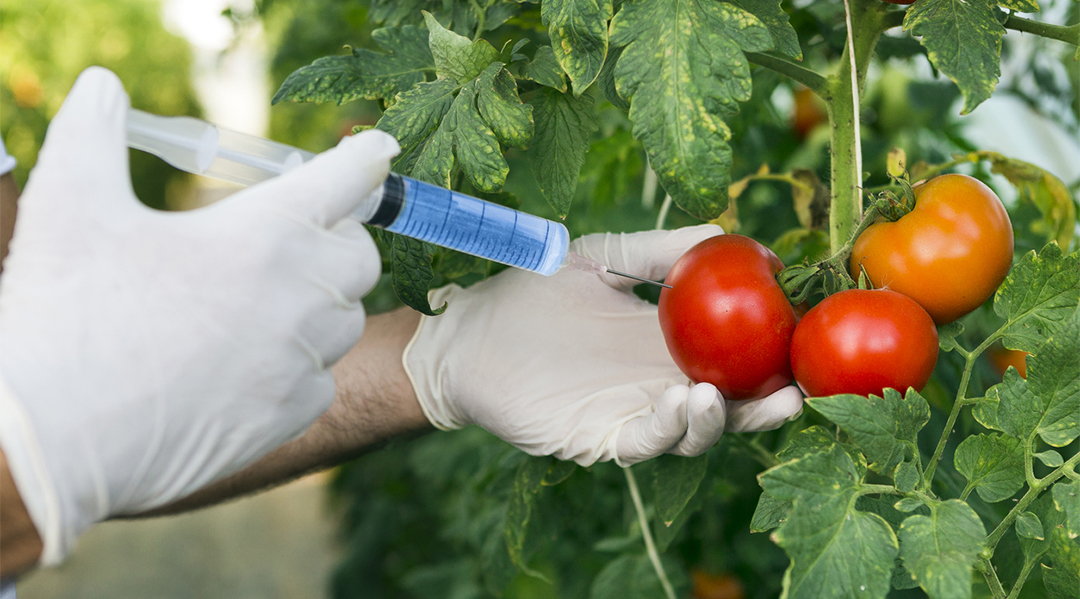Threshold GMO Quantification Testing (0.9% EU Labeling)
The European Union's labeling regulation on genetically modified organisms (GMOs) requires that food and feed containing more than 0.9% of a GMO to be labeled as such. This threshold is stringent, ensuring high standards for consumer safety and regulatory compliance.
Our Threshold GMO Quantification Testing service specializes in accurately quantifying the presence of GMOs down to this level using advanced analytical techniques. This service is particularly important for food processors, importers, and manufacturers who must ensure their products meet EU labeling requirements.
The testing process begins with a detailed sample preparation step where the raw materials or final products are broken down into components that can be analyzed. We use state-of-the-art mass spectrometry techniques to identify and quantify specific GMO sequences in the samples.
Our expertise ensures precise measurements, which is crucial for compliance purposes. The testing process adheres strictly to international standards such as ISO 17025 for method validation and ISO/IEC 17026 for proficiency testing. This guarantees that our results are reliable and accurate.
The results of the test provide critical information on whether a product falls within or exceeds the EU's defined threshold for GMO content. This is essential for decision-making processes related to labeling, sourcing, and product reformulation.
Understanding the scope and methodology behind this testing helps our clients make informed decisions regarding their supply chains and product formulations. By leveraging our advanced capabilities in GMO quantification, we enable businesses to stay ahead of regulatory requirements and ensure consumer trust.
Scope and Methodology
| Sample Type | Methodology | Acceptance Criteria |
|---|---|---|
| Foods, feeds, and food ingredients | Advanced mass spectrometry with target-specific probes. | Absence of GMOs or presence above 0.9%. |
| Processed products | Multistep extraction followed by precise quantification. | Quantitative results within the specified tolerance levels. |
| Raw materials | Initial screening followed by confirmatory analysis. | Positive identification of GMOs above 0.9% threshold. |
The testing process involves a series of steps to ensure accuracy and reliability, including sample preparation, extraction, amplification, and detection using mass spectrometry. This approach ensures that even trace amounts of GMOs are detected with high precision.
Our laboratory adheres strictly to EU regulations and international standards such as ISO 17025 for proficiency testing and ISO/IEC 17026 for method validation. These standards ensure that our results are accurate, reproducible, and reliable. We also participate in regular proficiency tests conducted by accredited bodies to validate the performance of our methods.
The use of advanced instrumentation such as LC-MS/MS (liquid chromatography-mass spectrometry) provides highly sensitive and specific detection capabilities. This allows for accurate quantification down to the 0.9% threshold, which is critical for compliance with EU labeling regulations.
Quality and Reliability Assurance
- Participation in regular proficiency testing programs.
- Use of certified reference materials for method validation.
- Detailed quality control measures at every step of the process.
- Continuous training and certification of laboratory staff.
- In-depth documentation of all test procedures and results.
- Regular calibration of instrumentation to ensure accuracy.
The reliability and accuracy of our testing are paramount, especially given the stringent requirements set by EU regulations. Our quality assurance measures include strict adherence to ISO 17025 for proficiency testing and ISO/IEC 17026 for method validation. We also participate in regular proficiency tests conducted by accredited bodies to validate the performance of our methods.
Detailed documentation ensures that every step of the testing process is recorded, allowing for traceability and transparency. This is crucial not only for regulatory compliance but also for internal quality control processes. Continuous training and certification of laboratory staff ensure that all personnel are up-to-date with the latest techniques and standards.
The use of certified reference materials ensures that our methods are validated accurately. Detailed quality control measures at every step of the process further enhance reliability. Regular calibration of instrumentation guarantees consistent results, which is essential for accurate quantification down to the 0.9% threshold.
Environmental and Sustainability Contributions
The testing we provide contributes significantly to environmental sustainability by ensuring that products are accurately labeled according to EU regulations. Proper labeling helps consumers make informed choices, which in turn supports sustainable agricultural practices. By adhering to these standards, businesses can contribute positively to the environment while maintaining consumer trust.
Our service also aids in reducing waste and promoting efficient resource use through precise quantification of GMOs. This ensures that products are formulated correctly, minimizing unnecessary production and disposal. The accurate identification and quantification of GMOs allow for better management of agricultural inputs, which can lead to more sustainable farming practices.
The stringent labeling requirements also encourage the development and use of non-GMO alternatives, promoting biodiversity and genetic diversity in agriculture. By supporting these efforts, our testing service plays a vital role in promoting environmental sustainability and responsible agricultural practices.





